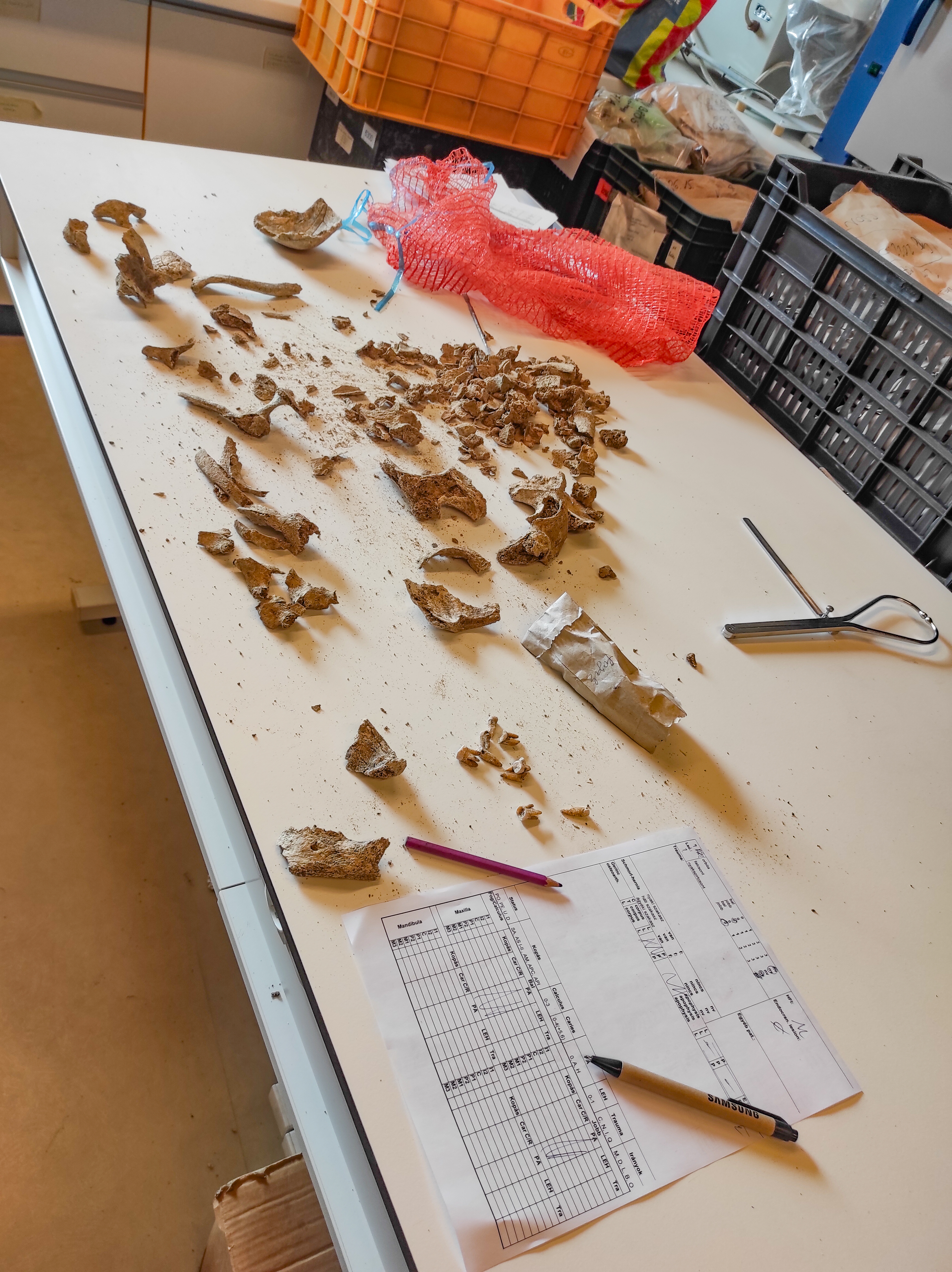Located in today’s Óbuda, the civil tow
n of Aquincum was established during the Roman conquest. Over the past decades, various cemetery sections have been excavated, including one at the Pók Street site, which is the focus of this anthropological investigation.
Basic Data of Individuals from the Pók Street Site
The anthropological analysis of the Pók Street site (specifically: Budapest, District III, Pók street – Városfal street – Nánási strees) has just concluded, identifying the remains of 33 individuals. Unfortunately, due to post-mortem processes and flooding from the Danube, the skeletons were poorly preserved and incomplete, complicating demographic analysis based solely on skeletal remains. Nevertheless, 4 children and 27 adults were examined, though sex could be conclusively determined for only 7 males and 6 females. Genetic studies may help clarify the sex of additional adult individuals in the future.
 A poorly preserved skeleton makes difficult to establish an accurate biological profile. Photo: Krisztián Kiss
A poorly preserved skeleton makes difficult to establish an accurate biological profile. Photo: Krisztián Kiss
Paleopathological Examinations: Lifestyle Reconstruction and Infections
A key objective of the Lendület “Momentum” project is to reconstruct the lifestyle of Aquincum and Solva’s former populations. In line with this goal, we systematically recorded disease markers for individuals from the Pók Street site.
Bone injuries reveal environmental impacts on the individuals (e.g., violent actions, occupational hazards, or habitat conditions). Activity-related degenerative joint wear offers further insight into lifestyle, as different roles within a community create varying stresses on the joints, which are reflected in skeletal changes. Dental and jaw conditions primarily reveal dietary habits, which can be inferred through examining dental calculus and caries rates. Additionally, tool use markers, such as evidence of teeth used as a “third hand,” can also be observed on the teeth.
Other diseases that leave marks on bones include infections. In several individuals, signs of meningitis were identified on the inner surface of skull bones, suggesting pathogen involvement. More conclusively, two adult individuals exhibited osteomyelitis and osteitis (inflammation of the bone marrow and bone), with pathological changes visible on their tibiae and fibulae. Macroscopic observations indicate a possible pyogenic bacterial infection as the cause; however, archaeogenetic analysis is needed to confirm this etiology.
A complex analysis of joint changes and dental markers, as well as comparisons with other sites, remains a future objective, so conclusions on these questions are still pending. Currently, we can state the following about the individuals excavated at Pók Street:
- No traumatic injuries were observed on the examined bones.
- No individuals exhibited severe joint changes associated with lifestyle factors, infection, or joint trauma.
- No evidence of tool use was found on the individuals' teeth.
Future Tasks
The next step for the Pók Street site will be to conduct DNA and stable isotope analyses, following discussions with our archaeological and genetic colleagues regarding sampling strategy. Genetic results will provide insight into the demographic and biological structure of this community and improve disease identification. In addition, stable isotope (carbon and nitrogen) data will play a key role in reconstructing diet in the future.
Text and cover photo: Krisztián Kiss
